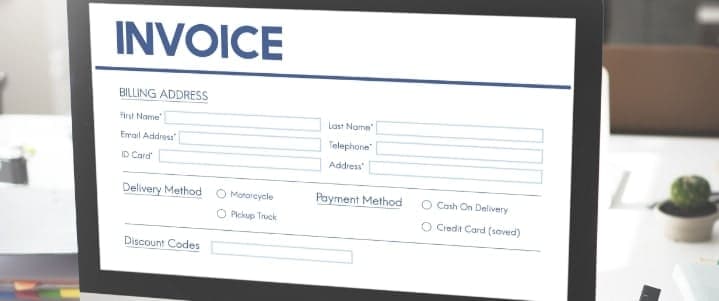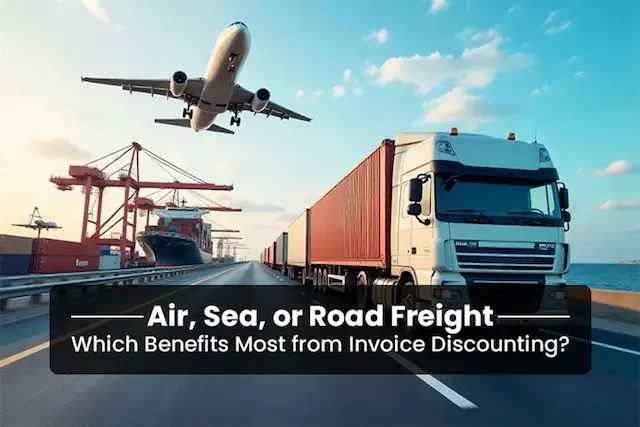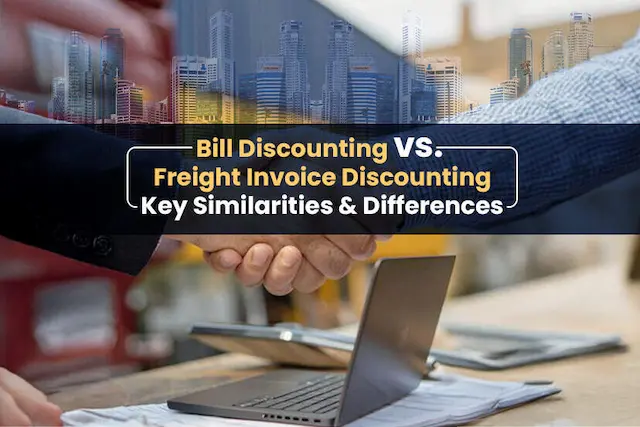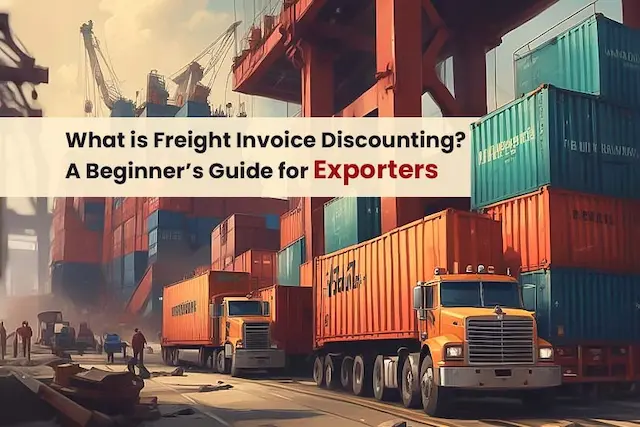For a small business owner, sometimes it becomes really challenging to manage important expenses and ensure smooth cash flow in the business. A shortage of funds becomes a recurring issue, especially when your customers fail to settle the invoices on time. Bringing funds into your business could be hard, especially when you have just started.
Well, Invoice Factoring can help here!
Invoice Factoring At a Glance
Funding Range: $5,000 to $20 million per month
Invoice Terms: Payable within 90 days, lien-free (invoice should not be subject to any legal claims)
Business Experience: Varies by factoring company
Customer Qualifications: B2B or B2G customers, no serious legal/tax problems, consistent on-time payers
Documentation Needed: Standard personal & business info, A/R & A/P aging reports, tax returns, corporate paperwork
Discount Rate: 0.5% to 5%
Expected APR (Annual Percentage Rate): 28% to 70%
Advance Percentage: 65% to 95%
Other Fees: Varies by factoring company
*Please note that the information here is subject to change based on so many factors.
What Is Invoice Factoring?
Invoice Factoring is a financial arrangement between the financial firm and the business where the business turns its unpaid invoices into immediate cash.
The moment you issue an invoice, the financial company pays you a partial payment of the total invoice amount.
Once the finance company settles the payment with your client, they will pay the amount left minus a fee they will charge, called the discounting rate.
Example:
Let’s take the example of Alex, a small business owner. Recently, Alex issued an invoice of $8,000 with a 30-day payment term. However, the customer paid only 2 days before the deadline, which caused cash flow issues.
To overcome cash flow challenges, Alex decided to try invoice factoring. On another occasion, Alex issued a similar invoice for $8,000 and used invoice factoring. The factoring firm provided an advance of 85%, amounting to $6,800. When the customer paid the invoice within 30 days, the firm deducted a service fee of 3% ($240) and paid Alex the remaining balance, totaling $7,760.
By using invoice factoring, Alex received an immediate advance, improving cash flow and avoiding the need to wait for the customer’s payment. This allowed Alex to take advantage of supplier discounts and manage expenses better.
5 Quick Facts About Invoice Factoring
Invoice Factoring is not a loan!
Your customer’s creditworthiness is more important than yours!
With your company’s growth, the funding grows!
Getting started is very easy!
Your company’s cash flow boosts!
Types of Invoice Factoring
It’s very important that you are aware of all the types of invoice factoring to make an informed decision as to what your business needs the best. The types include:
1. Recourse Factoring
Recourse factoring is the most common type of Invoice factoring, and it means that you will have to buy back all the invoices that the factoring company fails to get payment on. It means that you will be accountable for any non-payment from your clients.
2. Non-Recourse Factoring
Contrary to what recourse factoring is about, non-recourse factoring means that the factoring company will take the risk of the non-payment and not your company.
3. Spot Factoring
Spot factoring is a type of Invoice Factoring where a business can quickly get funds by selling its unsettled invoices to a third party called a spot factoring company. It enables immediate cash flow in the business without having to wait for the clients to settle the credit.
4. Contract Factoring
Contract manufacturing is a basic and simple financial arrangement where the company can sell its purchase orders to a factoring company and get immediate cash to infuse into its operations.
5. Non-Notification Factoring
It’s an uncommon type of Invoice Factoring where the factoring company cannot communicate with the client’s customer. The aim is to not let the customers know that the company is using a factoring company for payment purposes.
6. Debt Factoring
Debt factoring is just another name for Invoice factoring, where the business sells the entire invoice batch for a particular debtor.
7. Advance Factoring
Advance factoring is a type of Invoice Factoring where the financial company pays an advance to the business on the value of the invoices sold. That advance is a certain percentage of the value of the invoice, and the rest is paid when the customer settles the invoice.
8. Maturity Factoring
In maturity factoring, the factoring company takes on the risk of non-payment from the customers whose invoices they have purchased. This means that even if the customers take longer to pay or default on the payment, the factoring company is responsible for the loss.
How Invoice Factoring Works
Here’s a stepwise guide to how invoice factoring works from the start till the end.
1. Invoicing
The process begins the moment you provide an invoice to your clients of goods and services purchases.
2. Contact a Factoring Firm
Contact a factoring company of your choice and go through their application process.
3. Sell Unsettled Invoices
Once your application is approved, you sell the unpaid invoices to the factoring company.
4. Agreement & Advance
After you’ve passed their screening process, you will enter into an agreement with the company and receive the initial amount as an advance.
5. Getting the Advance
Within 1-4 business days, you get the advance amount, which is around 75–90% of the total invoice amount. The exact percentage depends on risk factors, your industry, and the size of the transaction.
6. Notice to the Customers
The factoring company will now inform you about the factoring arrangement to your customers.
7. Customer Payment
When your customer pays the invoice amount, the factoring firm will deduct their factor fee (discount rate) and provide you with the remaining balance.
8. Factor Fee/Discount Fee
It’s the cost of borrowing funds in advance against your unpaid invoices. It is usually charged weekly or monthly and varies between 1% to 5%, depending on the industry.
Pros and Cons of Invoice Factoring
With how Invoice factoring works, it’s equally important to understand the possible pros and cons in order to make a more informed decision.
Pros Of Invoice Factoring
The factoring company is more concerned and focused on your customer’s creditworthiness than your credit score. So, it makes it possible for businesses with different credit histories to access advance funds against their invoices.
All your account receivables will be handled by the experts, which free up your resources to be utilized elsewhere.
Factoring provides a swift way to receive cash, improving your business’s cash flow and addressing immediate financial needs.
Cons Of Invoice Factoring
Invoice factoring may hamper your relationship with your customers as the process involves a direct conversation between the factoring company and your customer.
Factoring fees can add up, especially if customers delay their payments, which might increase the overall cost of financing.
When you choose invoice factoring, your invoices are sold to a third party. It could expose you to a blanket Uniform Commercial Code (UCC) filing, affecting your ownership rights.
Invoice Factoring Eligibility Criteria
To get an access to Invoice Factoring, the business owner must:
Fall into a bracket of profit margin and annual turnover as set by the particular firm.
Have a good client base with a good credit history. The factoring company favors businesses with clients who pay on time.
Have no history of bankruptcy.
Credlix: Empowering Businesses with Top Invoice Factoring Solutions
Here is Credlix! Your reliable platform for the best invoice factoring solutions seamlessly With Credlix’s outstanding services, cash-strapped customers can effectively release their cash to fuel their growth and success. By leveraging advanced technology and expertise, Credlix ensures a seamless process, offering competitive rates and tailored solutions.
Whether it’s B2B or B2G customers, Credlix considers creditworthiness, providing customized funding options to match specific needs.
To Conclude
Invoice factoring can be a lifeline for small businesses trapped in bad cash flow. It converts unpaid invoices into instant cash, ensuring smooth operations. While it offers benefits like quick funding and creditworthiness consideration, businesses should be mindful of customer communication and fees. Understanding the different types of factoring helps make informed decisions.
By leveraging invoice factoring wisely, businesses can overcome financial challenges and thrive. On the top of everything, choose a reliable partner like Credlix and say goodbye to cash flow worries.
Also Read: Exclusive Tips to Maximize Benefits of Invoice Discounting for Individuals
Also Read: How Can Invoice Financing Increase Your Business Cash Flow?




